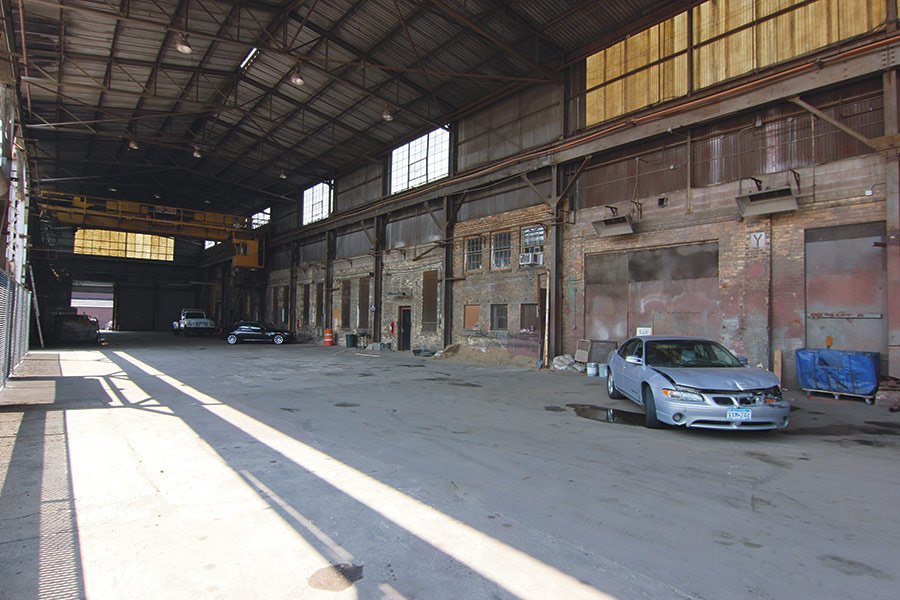Camile LeFevre reports for The Architect’s Newspaper: Assembly Line. Architects retool a WWII-era steel works factory in Minneapolis. This complex is now the subject of an adaptive reuse plan to house the creative industries of the 21st century.

Once a steel works facility, Minneapolis’ Crown Center is getting a second act thanks to local Brewers and Designers.
Tucked behind the intersection of two rebounding thoroughfares in Northeast Minneapolis is the former Crown Iron Works, a steel works and factory that bustled with activity during World War II when much of it manufactured airplane wings, bridges, and pontoons. After lying dormant for decades, the complex is now the subject of an adaptive reuse plan to house the creative industries of the 21st century: architectural offices, design firms, and a microbrewery among them. Bauhaus Brew Labs now occupies one formidable 9,255-square-foot structure measuring 200 feet long and 50 feet wide. Designed by Shelter Architecture, the space includes new glass windows and skylights. The original overhead bridge crane—now a chassis for the electrical, plumbing, and beer lines—looms above the fermenting tanks in an open, spacious taproom.
The family-owned brewery is extremely brand conscious, choosing the Bauhaus movement in the design world to exemplify the innovation and care with which they craft their beer. Shelter specified orange, yellow, and blue accents and simple modern furnishings that carry the brand forward. “Whole families are welcome to Bauhaus,” said Kurt Gough, partner, Shelter Architecture, “so we wanted the space to be inviting and cheery. We also included a large garage door that opens to an outdoor patio.” The patio—where kids cavort, food trucks line up, and families dine and drink—also connects to another outdoor space, The Shed, which is a former impound lot for a towing company. The design of the partially covered 16,000-square-foot space was inspired in part by New York City’s High Line, says Michael Roehr, principal, RoehrSchmitt Architecture, “because of the magical way in which the High Line weaves its way through and engages the private spaces around itself.”
To “introduce green space into this very hard, cold, industrial complex, and ensure the project could compete with and complement the scale of the space,” said Roehr, he included raised concrete planters, large Cor-ten steel boxes (10 feet long by 4 feet wide by 4 feet tall) and “other super-sized elements” like six-foot culvert sections repurposed as tree planters. “Placed into their context they feel appropriate to the scale of the space,” said Roehr. The architects removed selected metal roof panels to let in sun and rain. Several water tanks salvaged from a nearby factory collect rainwater and are used to drip irrigate the linear planters. Benches clip onto the garden wall. A stage between The Shed and Bauhaus’ beer garden hosts live music and other events. Meanwhile, an enclosed mezzanine space designed by RoehrSchmitt now houses Shelter’s architectural offices. RoehrSchmitt has its offices in Crown Center, as well. Adjacent to The Shed is a 15,520-square-foot industrial building that Kampa Studio is working on for modern furniture design firm Blu Dot. The revitalized space for offices and a showroom features floor-to-ceiling glass, exposed ceiling joists and trusses, a refinished concrete floor, and exposed brick. “Our destinies in this complex are intertwined,” said Roehr.
 |
 |
 |
| The building before conversion. | ||
To learn more about adaptive reuse, please contact us today!






